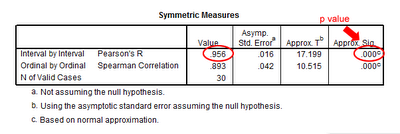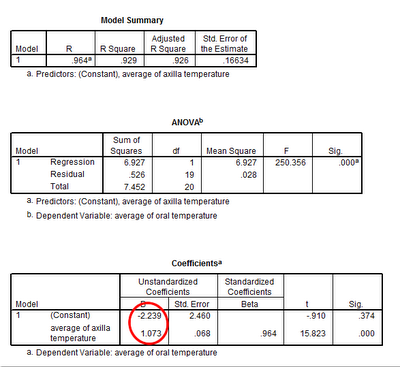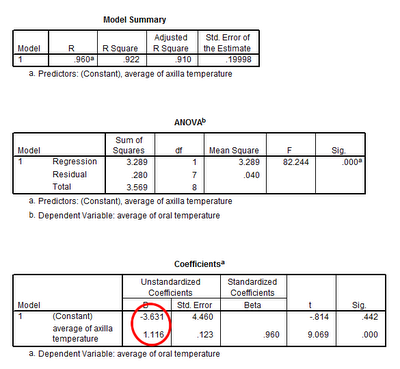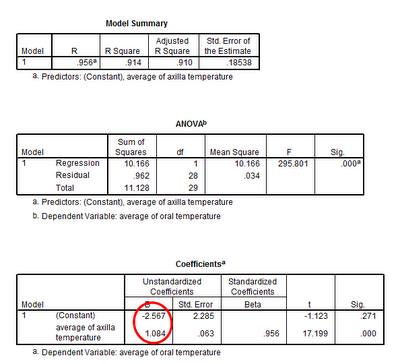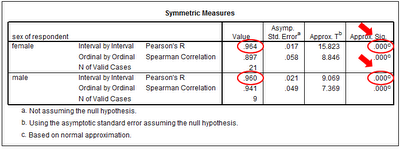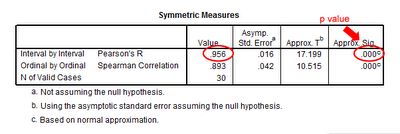Overall, the data collected was good and there was no rejection.
Hypothesis Testing
1. Null Hypothesis: There is NO significant relationship between a person's oral temperature and axilla temperature.
2. Alternative Hypothesis: There IS a significant relationship between a person's oral temperature and axilla temperature.
Criteria to "Reject" or "Accept" the Null Hypothesis:
1. The decision rests on the p-value test statistic in relation to the user-defined α (alpha).
2. Alpha refers to the significance level. At this critical region, the range of values of the test statistic indicates that there IS a significant relationship and that the null hypothesis is rejected.
3. If the test statistic falls in the critical region (ie. p-value is ≤ α), it would lead to the rejection of the Null Hypothesis. In other words:
If p is ≤ α, we REJECT the Null Hypothesis.
If p is > α, we FAIL TO REJECT null hypothesis and we've to ACCEPT the Alternative Hypothesis.
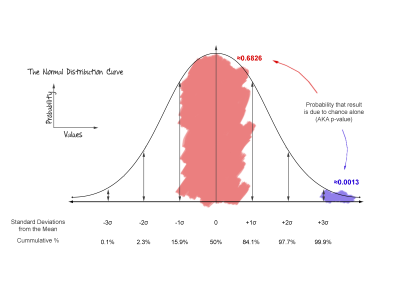
In our study, we have set α at 0.05.
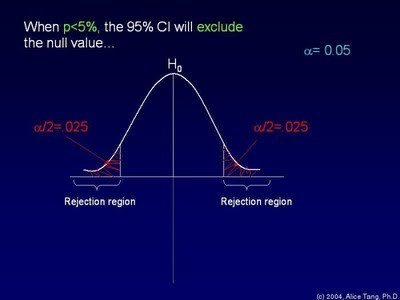
Choosing an appropriate statistical test
The statistical test depends whether the research question is about:
- Difference, or
- Correlation.
Our study is about correlation.

source: Chia, C. Y. (2008). Statistics in health sciences. (4th ed.). Singapore: McGraw Hill Education
Since both of our variables in question are scale variables, and guided by the above decision path, we use Pearson's r to do the testing.
What is Pearson's r?
1. Pearson's r let us know the strength and direction of the linear association between two scale variables.
2. This correlation coefficient indicates the strength of the correlation.
3. Its limit ranges from -1 to +1. The + or - values indicates the direction of the correlation and lets us know how the variables are related.
4. Values near -1 indicates a strong negative relationship and is visually represented by a downward slope of the samples in a graph, while values near +1 indicates a strong positive relationship and an upward slope of the graph.
5. The closer the correlation coefficient approaches zero, the weaker the relationship between the two variables.



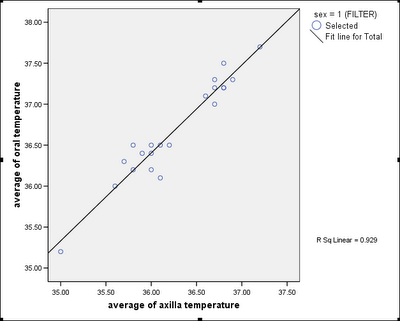 Using the data, we generated a Scatter Plot of Oral vs Axilla Temperature for Female.
Using the data, we generated a Scatter Plot of Oral vs Axilla Temperature for Female.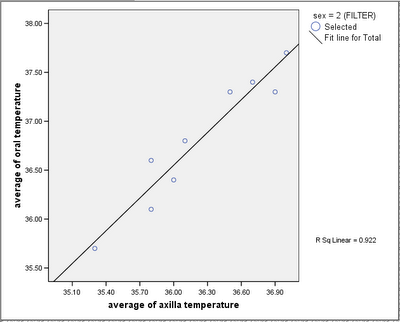 And also a Scatter Plot of Oral vs Axilla Temperature for Male.
And also a Scatter Plot of Oral vs Axilla Temperature for Male.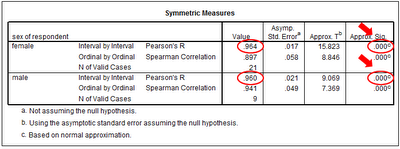
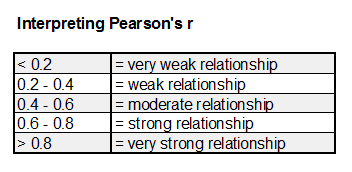
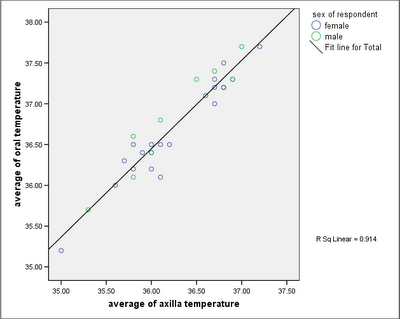 A Scatter Plot of oral temperature vs axilla temperature for BOTH Male & Female.
A Scatter Plot of oral temperature vs axilla temperature for BOTH Male & Female.